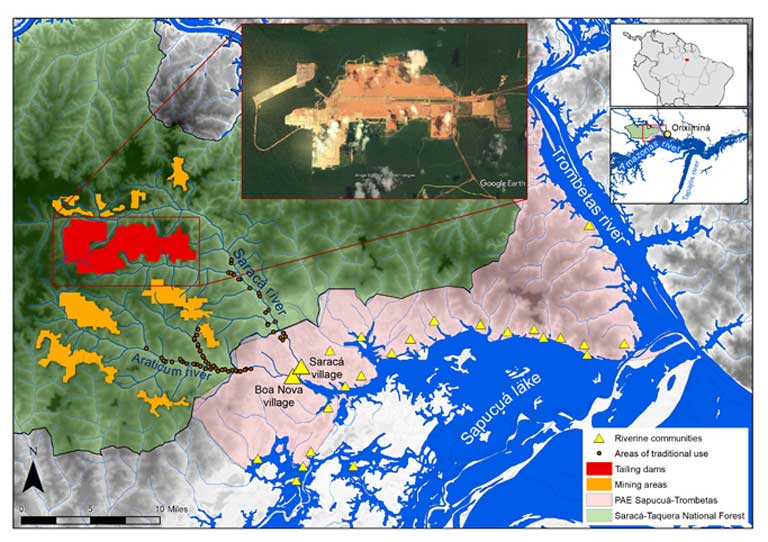Developing world inequity?
Luiz Jardim, a lecturer at Rio de Janeiro’s Universidade Federal Fluminense, criticizes the inequity of international geopolitics and of corporations that reward the developed world with immense mineral wealth, while transferring the bulk of socio-environmental risks for large-scale mining to the developing world.
“It’s above all in the poorer countries where the largest number of [tailings] dams are located and where environmental damage and deaths occur,” he wrote in a recent research paper. In his view, it’s not by chance that, barely three years after the Mariana tragedy, the Brumadinho tailings dam burst, also in Minas Gerais state, killing 259 people, all swept away by a wall of mud.
“In both cases the companies told the population that the dam was safe, just as MRN is telling us,” said Lopes.
Another community leader, José Domingos Rabelo, believes that if one of MRN’s dams failed, the chaos created would be far greater than the company suggests. “Not only Boa Nova and Saracá would be affected, but a total of 16 communities,” he stated. “If an accident occurred, 3,000 people would be driven out.” Rabelo is referring to the densely occupied traditional communities around Sapucuá Lake, a large waterbody west of the town of Oriximiná (see map).

The mining company assures the communities that risks are minimal and that the dams are safe. MRN engineer Marcela Pellegrini, standing beside one of the tailings dams, explained that the company’s waste impoundments were not built using the flawed technique employed at both Mariana and Brumadinho. She says that a safer method was utilized, and this fact, along with the flat terrain and lower height of the dams, makes the MRN complex much safer.
A National Agency of Mining (ANM) assessment of MRN’s dams is not so reassuring. One dam has been rated “high risk” by the ANM, because some of its features “can influence in the probability of an accident.” Another 14 possess “a high potential of associated risk,” the assessment says, which means that, in the hypothetical case of a dam failure, there could be “social, environmental, economic and mortality risks”.
“We are in the Amazon forest and, if waste falls into a creek flowing round the Saracá Plateau [where the dams are located], the water will become cloudier and more fish will die,” the MRN representative explained. But she stressed that, even in the improbable case of a breach, it is unlikely anyone would die. MRN practices diligence, monitoring the dams daily, she says.
But Lopes questions this optimistic evaluation. She notes that while no immediate deaths might result, serious environmental damage could have a huge negative impact on traditional communities in the long run. “I don’t think we’d be killed outright in an accident, but die, little by little,” she says. She wonders if such a spill could turn them into enviro-refugees: “Imagine us moving into towns? Without jobs, how would we live? Our biggest concern is that we have nothing on paper saying what would happen to us” in case of disaster.
Perceived problems in the development of the giant bauxite mine and its waste disposal system since the 1970s has raised multiple doubts. In his research paper, Luiz Jardim points out that in the 21 different licensing procedures that MRN went through with IBAMA, the Brazilian government’s environmental agency, the mining company was never required to fully analyze the environmental impact of the waste disposal system nor to present a set of proposals for mitigating its impact on the local communities and for compensating them.
Lúcia Andrade, the director of the Comissão Pró-índio de São Paulo, an NGO that works with the communities, says that one of the problems is that dam monitoring by ANM lacks transparency. The mining agency’s reports are not made public, supposedly to protect the company’s industrial property rights, but leaving local people without access to the agency’s safety assessments.
"traditional" - Google News
July 09, 2020 at 11:04PM
https://ift.tt/3febLyr
Traditional villages dread living in shadow of Amazon tailings dams - Mongabay.com
"traditional" - Google News
https://ift.tt/36u1SIt
Shoes Man Tutorial
Pos News Update
Meme Update
Korean Entertainment News
Japan News Update
Bagikan Berita Ini















0 Response to "Traditional villages dread living in shadow of Amazon tailings dams - Mongabay.com"
Post a Comment